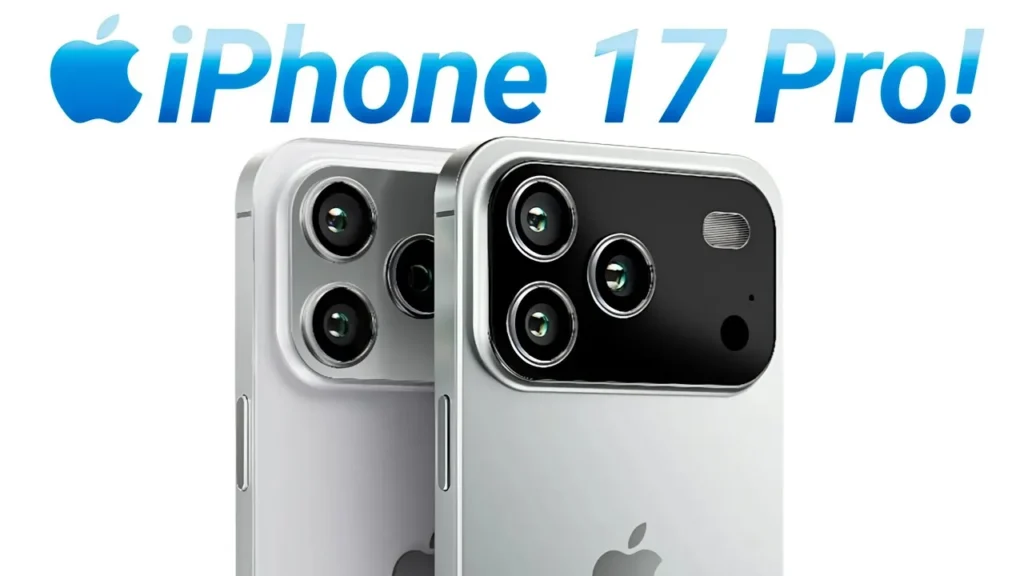The anticipation surrounding Apple’s iPhone 17 Pro models is steadily growing. Expected to debut in September 2025 alongside the iPhone 17 and the sleek iPhone 17 Air, the Pro and Pro Max variants are generating considerable buzz. While official details remain under wraps, a wealth of leaks and expert insights offer a compelling, albeit speculative, glimpse into these high-end devices. Let’s delve into the key rumored features, weigh their potential pros and cons, and highlight the crucial takeaways.
A Potential Design Evolution: Weighing the Changes
The iPhone 17 Pro series might introduce a significant design shift, particularly concerning the materials and the rear camera module.
Rumored Part-Glass, Part-Aluminum Build
Instead of the full titanium construction, speculation suggests Apple might explore a dual-material chassis.
Pros:
- Enhanced Durability (Aluminum): An aluminum frame could offer improved resistance to drops and impacts, especially on the upper portion of the device.
- Wireless Charging Compatibility (Glass): The inclusion of a glass section would ensure seamless compatibility with wireless charging technologies like MagSafe.
- Potential Cost Savings: Aluminum could potentially be a more cost-effective material compared to titanium.
Cons:
- A potential drawback could be a perceived reduction in the luxurious feel, as some consumers might view aluminum as a step down from the titanium utilized in prior Pro iterations.
- Design Consistency: A shift in materials could alter the established aesthetic of the Pro lineup.
The Evolving Camera Bump: Horizontal Layout?
The most significant potential alteration to the device’s aesthetics involves a shift towards a sideways-oriented configuration for the rear camera module.
Pros:
- Distinctive New Look: A horizontal arrangement would provide a unique visual identity for the iPhone 17 Pro.
- Potential for New Camera Technologies: The redesigned space could accommodate new sensor technologies or lens configurations.
Cons:
- Impact on Spatial Video: A horizontal lens setup might complicate or necessitate a redesign of the spatial video recording capabilities, which currently rely on vertically aligned lenses.
- Aesthetic Preferences: The horizontal design might not appeal to all users.
- Uncertainty of Implementation: The exact shape (rectangular, elongated oval) and functionality remain unclear.
Key Feature Deep Dive: Pros and Cons
Let’s examine other significant rumored features and their potential advantages and disadvantages.
120Hz ProMotion Across All Models
Pros:
- Smoother Visual Experience: A 120Hz refresh rate delivers significantly smoother scrolling, animations, and overall responsiveness on the display.
- Improved Gaming and Media Consumption: Higher refresh rates enhance the fluidity of games and videos.
- No Longer a Pro Exclusive: This highly desirable feature will be accessible to a wider range of iPhone users.
Cons:
- Potentially Higher Battery Consumption (Without Optimization): While ProMotion is adaptive, a higher base refresh rate could theoretically consume more power if not efficiently managed.
A19 Pro Chip on a 3nm Node
Pros:
- Enhanced Performance: A new chip built on a smaller node typically offers significant improvements in processing power and graphical performance.
- Improved Efficiency: The 3nm architecture could lead to better power efficiency, potentially extending battery life.
Cons:
- No Immediate User-Facing Drawbacks: This is generally a positive upgrade, though the real-world impact will depend on software optimization.
Focus on Thermal Improvements
Pros:
- Sustained Performance: Better thermal management prevents performance throttling during intensive tasks like gaming or video editing.
- Increased Device Longevity: Reduced heat can contribute to the overall lifespan of the device’s components.
Cons:
- Not Directly Noticeable (Unless Poorly Implemented Previously): Users might only notice the benefits indirectly through smoother sustained performance.
Key Takeaways: What to Anticipate
- Design Overhaul: Expect a potential shift in materials to a part-glass, part-aluminum build and a redesigned, possibly horizontal, rear camera bump.
- Display Enhancement for All: The smoother 120Hz ProMotion refresh rate is likely coming to the standard iPhone 17 models as well.
- Thermal Management Focus: Apple is prioritizing keeping the device cool for optimal performance.
- Uncertainty Remains: Many details, such as the exact camera bump design and specific new features, are still subject to speculation.
Conclusion: Preparing for the iPhone 17 Pro
The iPhone 17 Pro models are shaping up to be intriguing contenders in the high-end smartphone market. The rumored design changes, coupled with anticipated performance and display enhancements, suggest a significant evolution. By understanding the potential pros and cons of these rumored features, you can better prepare for Apple’s official announcement in September 2025 and decide if the iPhone 17 Pro aligns with your needs and expectations. Stay informed as more details emerge!

